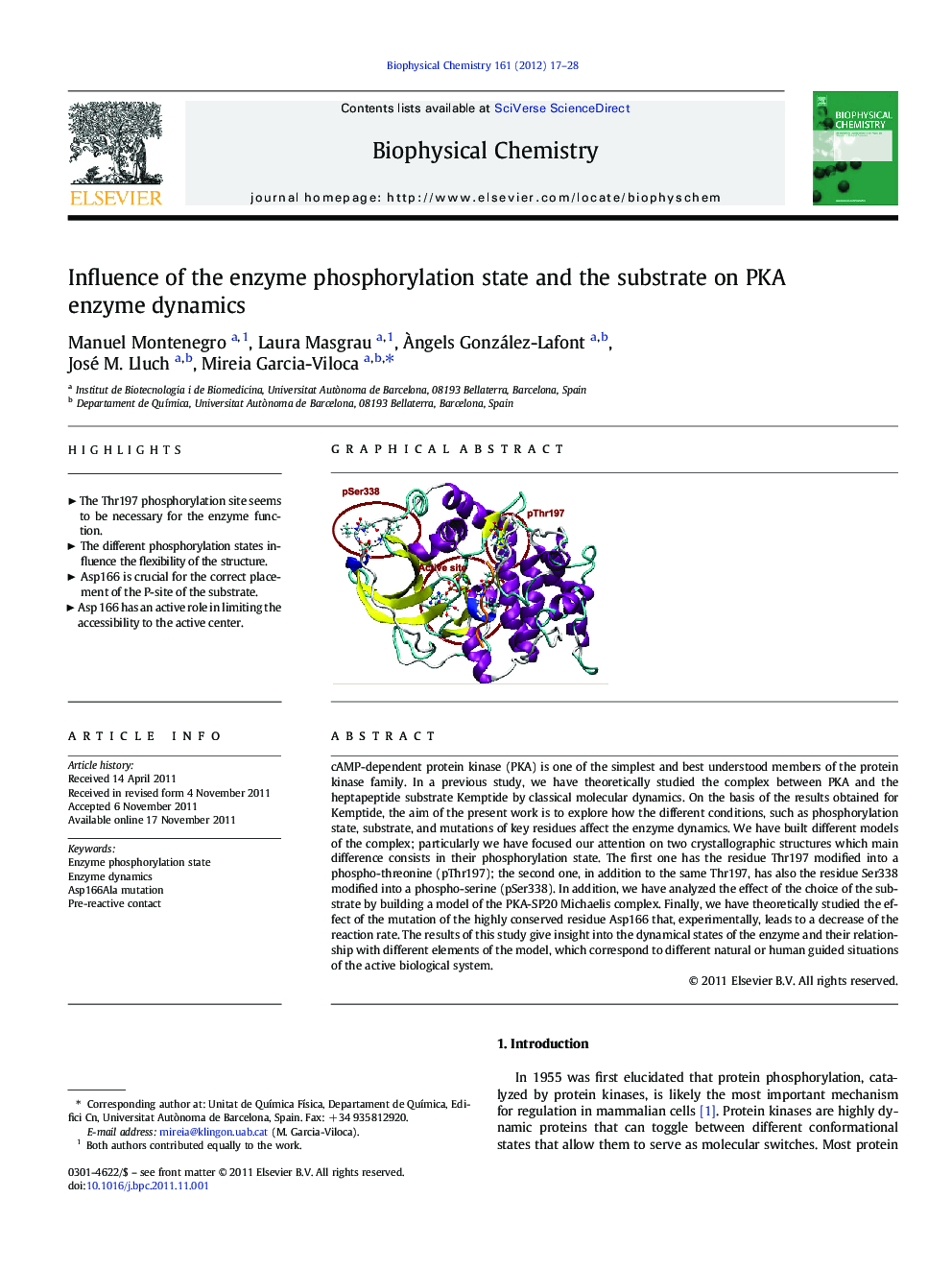| Article ID | Journal | Published Year | Pages | File Type |
|---|---|---|---|---|
| 5371251 | Biophysical Chemistry | 2012 | 12 Pages |
cAMP-dependent protein kinase (PKA) is one of the simplest and best understood members of the protein kinase family. In a previous study, we have theoretically studied the complex between PKA and the heptapeptide substrate Kemptide by classical molecular dynamics. On the basis of the results obtained for Kemptide, the aim of the present work is to explore how the different conditions, such as phosphorylation state, substrate, and mutations of key residues affect the enzyme dynamics. We have built different models of the complex; particularly we have focused our attention on two crystallographic structures which main difference consists in their phosphorylation state. The first one has the residue Thr197 modified into a phospho-threonine (pThr197); the second one, in addition to the same Thr197, has also the residue Ser338 modified into a phospho-serine (pSer338). In addition, we have analyzed the effect of the choice of the substrate by building a model of the PKA-SP20 Michaelis complex. Finally, we have theoretically studied the effect of the mutation of the highly conserved residue Asp166 that, experimentally, leads to a decrease of the reaction rate. The results of this study give insight into the dynamical states of the enzyme and their relationship with different elements of the model, which correspond to different natural or human guided situations of the active biological system.
Graphical abstractDownload full-size imageHighlights⺠The Thr197 phosphorylation site seems to be necessary for the enzyme function. ⺠The different phosphorylation states influence the flexibility of the structure. ⺠Asp166 is crucial for the correct placement of the P-site of the substrate. ⺠Asp 166 has an active role in limiting the accessibility to the active center.
